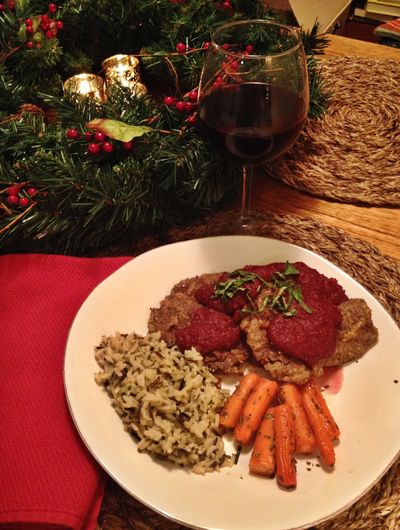Cooking your game: Holiday hazelnut duck with fig and brandy cranberry sauce

When it comes to bird hunting, waterfowl may be the most difficult to master. Success in the sport starts with proper intel – knowing from where the birds are flying, where they’re landing. Then there’s the fine art of calling, getting a flock of mallards to make a U-turn midflight and descend into a group of decoys.
A hunter must judge the bird’s speed, angle and distance to lead the bird and land a successful shot. Even the most proficient trap shooters are vexed when they hit the ponds and lakes in hopes of bagging a few waterfowl.
A few days before Thanksgiving, a couple of friends and I were lucky enough to take a few from the sky in the Colville National Forest. Snow covered the terrain and caked the pines, while fog hung low over the water. Flurries flickered on and off throughout the morning and afternoon.
Duck and geese were staying put, for the most part, relishing their rare bit of real estate that was an unfrozen patch of water. Limited visibility also seemed to curb their zeal for flight.
Yet between the bouts of snow, small packs of mallards picked up and crossed our line of sight beside a creek. While we came nowhere near limiting out, we were able to go home with a post-Thanksgiving meal already set.
I butterflied the breasts of a mallard, tenderized it and brined it for more than 24 hours in four cups of water, a couple of ounces of smashed fresh ginger and a tablespoon each of salt, pepper, cinnamon and sugar.
For the fig and brandy cranberry sauce, I sautéed my onions and garlic in butter until the onions were soft then added my ginger and brandy. If you want your sauce to have some kick, feel free to slice a jalapeño and sauté it alongside the onions. I let that simmer for about 10 minutes before adding the figs, cranberries, orange juice, salt and sugar.
Once all my sauce ingredients had cooked through, I pureed the mix and left it to cool atop the stove (burner off). I had preheated my peanut oil to 350 degrees. I doused my mallard breasts in my “duck dust” and set them to sear in the pan of peanut oil.
Duck is easily overcooked. In my opinion, it tastes best cooked medium, but some home cooks may wish to fully cook their wild duck. It’s up to you, but make sure to sear the duck to at least a light brown before flipping and finishing.
I served this meal with wild rice and lemon- and honey-basil-glazed baby carrots. The colors and tastes were worthy of being deemed a holiday favorite.